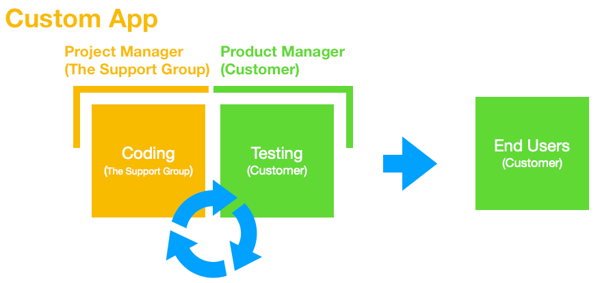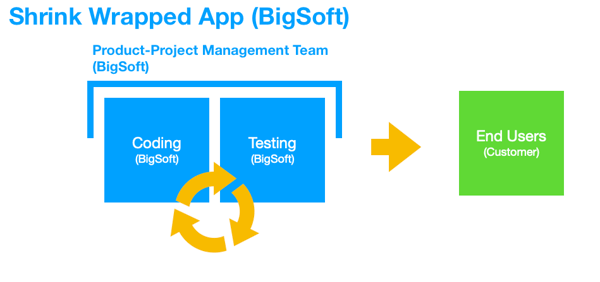As consumers, our active involvement in product development is basically limited. Some of us might participate in a focus group or share customer feedback to help product managers learn more about product pain points and/or ways to improve usability. But generally, product decisions are based on projected financial and utilitarian outcomes. For example, when we're in the market for a car, we don't work directly with Tesla to design a bespoke car. We usually select from a set of preconfigured models and maybe a list of add-on options to get as close as possible to our ideal driving experience but it's doubtful that we'd reimagine the vehicle as a whole.
Even though products aren't custom made for consumers, we still maintain the power of choice. Products either meet our needs or they don't, so we can keep them or not. Nonetheless, if we have very unique or specific needs, we might have to consider a custom solution. Custom design changes the dynamic of the traditional consumer-producer relationship as the customer plays a very active role in the development process. Sometimes roles become a little confusing or uncomfortable as the responsibilities shift unpredictably throughout the process. Naturally, we're going to unpack roles and responsibilities from a custom software development perspective because we have a lot of experience there. But, the idea can apply to any custom project.
Shrink Wrap App
So, let’s start with what for most of us is the typical experience when we buy off-the-shelf software. Let's say we buy a word processing program from a made-up company like BigSoft. Based on a traditional consumer-producer relationship, we instinctively understand BigSoft's responsibilities to consumers as well as our responsibilities as consumers. We expect BigSoft to provide a set of tools that will allow us to create text-based documents. Whether these documents ultimately become an important business contract or the next Great American Novel is up to us. However, if the BigSoft product turns our text into gibberish or randomly deletes the content as we type, there's clearly an issue with the tool. It would be BigSoft’s responsibility to fix the bugs and most likely fix them for free. This behavior isn’t part of the BigSoft product manager’s idea of how the tool should work. Somewhere within BigSoft’s development process, something was missed or not properly tested. On the other hand, we also understand that if we type our romantic epic set in Victorian England and publishers aren't the least bit interested in publishing it, this is not BigSoft's problem, but ours alone...we should have stuck with steampunk novels.
In the mass software development market, the likes of BigSoft will assemble a product/project management team consisting of coders and testers to implement and evaluate the program until the product manager is satisfied with the results and releases it to external users (customers). Everyone pretty much stays in their lane during the development process. Customers aren't involved until product launch so if they have any feedback it might be addressed in a subsequent release.
Custom(er) App
But things get a little more interesting when we start thinking about the customer's role in building custom software with a third-party team of developers, like The Support Group. During the initial free consultation, our customers describe their specific productivity inadequacies and maybe even share some ideas to improve workflow efficiency. Throughout the app development process, the customer and the developers collaborate as a team to create a product that uniquely resolves their organizational challenges. Given the closeness, the consumer-producer lines blur and folks even change lanes at times; whatever it takes to fulfill expectations on time and on (possibly under) budget.
The roles may change and overlap depending on a number of variables, but these are basic expectations:
Customer responsibilities:
- Communicate the product requirements, workflows and user interface.
- Promptly review and confirm that the workflows and UI meet the defined requirements (Product Manager and the QA functions overlap here).
- Provide feedback from the end users to ensure they're on board with the results and processes.
Developer responsibilities:
- Create interfaces and workflows that look and function according to the customer's wants and needs.
- Deliver a product for the customer to evaluate and test based on the prescribed project timeline.
- Communicate budget and timeline progress and diligently respond to customer's questions and feedback.
We're just exposing the tip of the iceberg here, but sometimes that is all you need to see to avoid a very cold bath. If the only thing you take away from this is that when you create a custom app with an outside developer, you become a member of a cross-functional team with overlapping responsibilities, then you've taken away more than enough.
Feel free to contact us if you're interested in learning more about our custom app development services.

_App_1200x627.jpg)


